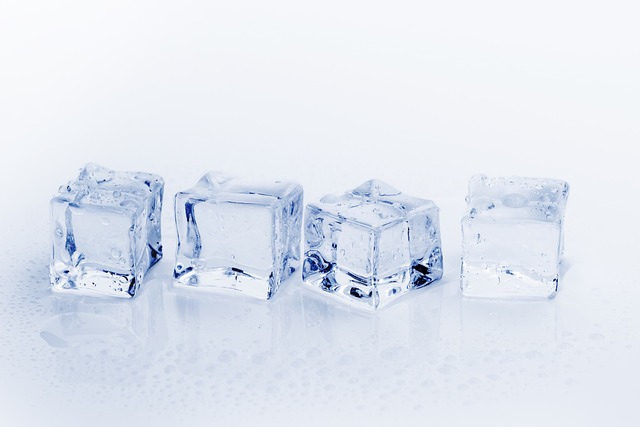TL;DR:
Degenerative joint and muscle conditions like osteoarthritis and myofascial pain syndrome cause chronic pain, reduced mobility, and diminished quality of life. Contrast therapy, an ancient practice involving alternating hot (e.g., heat pads, warm baths) and cold (e.g., ice packs, cold showers) treatments, offers natural relief by stimulating blood circulation, reducing inflammation, and relaxing muscles. This method provides significant pain management for conditions like arthritis and fibromyalgia, improving well-being and promoting better joint and muscle health through personalized routines. Start gently, increasing duration and intensity as comfort allows, for optimal results in managing pain and preserving mobility.
“Discover natural pain relief options for degenerative joint and muscle conditions, a growing concern in today’s world. This comprehensive guide explores effective alternatives to conventional medicine. From understanding the root causes and symptoms of these debilitating issues to unveiling the power of contrast therapy as a game-changer in pain management, we delve into practical solutions.
Learn how cold and heat therapy can provide relief for chronic conditions, and gain insights into creating personalized routines for optimal results. Embrace a holistic approach to healing with contrast therapy for chronic conditions.”
Understanding Degenerative Joint and Muscle Conditions: Causes and Symptoms
Degenerative joint and muscle conditions, often associated with aging, are a result of the wear and tear of joints and surrounding tissues. This progressive deterioration can lead to chronic pain, reduced mobility, and impaired quality of life. The most common forms include osteoarthritis, affecting primarily the knees, hips, and hands, and myofascial pain syndrome, which involves muscle spasms and trigger points.
Symptoms vary depending on the specific condition but commonly include joint stiffness, aching, swelling, and limited range of motion. In the case of myofascial pain, individuals may experience persistent muscle discomfort, headaches, and tender areas known as trigger points. Understanding these conditions is crucial in managing symptoms effectively. Contrast therapy, involving alternating between hot and cold treatments, has emerged as a promising approach for chronic conditions, offering potential relief without relying heavily on medications.
Exploring Contrast Therapy: A Natural Approach to Pain Management
Contrast therapy, an ancient practice, offers a natural and effective approach to managing pain associated with degenerative joint and muscle conditions. This method involves alternating between hot and cold treatments, such as applying heat pads followed by ice packs or taking warm baths interposed with cold showers. The theory behind contrast therapy is that it stimulates blood circulation, reduces inflammation, and relaxes muscles, providing significant relief from chronic pain.
For individuals suffering from conditions like arthritis, fibromyalgia, or muscle strains, contrast therapy can be a game-changer. By increasing blood flow to affected areas, heat helps deliver essential nutrients and oxygen while reducing stiffness. Conversely, cold therapy constricts blood vessels, minimizing swelling and numbing the area, offering a soothing effect that alleviates discomfort. Incorporating contrast therapy into a regular routine may enhance overall well-being and promote natural pain management for those dealing with chronic conditions.
Benefits of Cold and Heat Therapy for Chronic Conditions
Cold and heat therapy, often referred to as contrast therapy, offers a powerful tool for managing degenerative joint and muscle conditions. This ancient practice leverages the opposing effects of cold and heat to reduce pain, improve mobility, and enhance overall well-being. For chronic conditions, such as arthritis or fibromyalgia, where inflammation and muscle tension are prevalent, contrast therapy provides significant benefits.
The application of ice packs or cold compresses helps constrict blood vessels, reducing swelling and inhibiting nerve impulses that transmit pain signals to the brain. Conversely, heat therapy, through heating pads or warm baths, promotes blood flow and relaxes muscles, providing a soothing effect on chronic pain. By alternating between these two modalities, individuals can experience relief from persistent discomfort, improved flexibility, and a deeper sense of relaxation, ultimately supporting their journey towards better joint and muscle health.
Practical Application: Creating a Personalized Contrast Therapy Routine
Creating a personalized contrast therapy routine is an accessible and practical way to incorporate natural pain relief into your daily life for degenerative joint and muscle conditions. This involves alternating between hot and cold treatments, such as soaking in warm water followed by a cold compress or using heating pads and ice packs on affected areas. By incorporating these therapies into specific parts of your day—for instance, relaxing in a warm bath before bed and applying cold therapy upon waking—you can create a rhythm that supports your body’s natural healing processes.
Contrast therapy for chronic conditions has been shown to reduce inflammation, improve circulation, and enhance flexibility. It’s crucial to start slowly and listen to your body, gradually increasing the duration and intensity of hot and cold applications as comfort allows. Consistency is key; regular practice can lead to significant improvements in managing pain and maintaining mobility.
In conclusion, managing degenerative joint and muscle conditions no longer relies solely on medication. With the right combination of understanding your condition, exploring alternative therapies like contrast therapy, and personalizing treatments tailored to your needs, you can achieve effective natural pain relief. Remember, contrast therapy for chronic conditions offers a safe and beneficial approach to managing pain, enhancing mobility, and improving overall quality of life. Take control of your health and explore the power of contrast therapy today.
